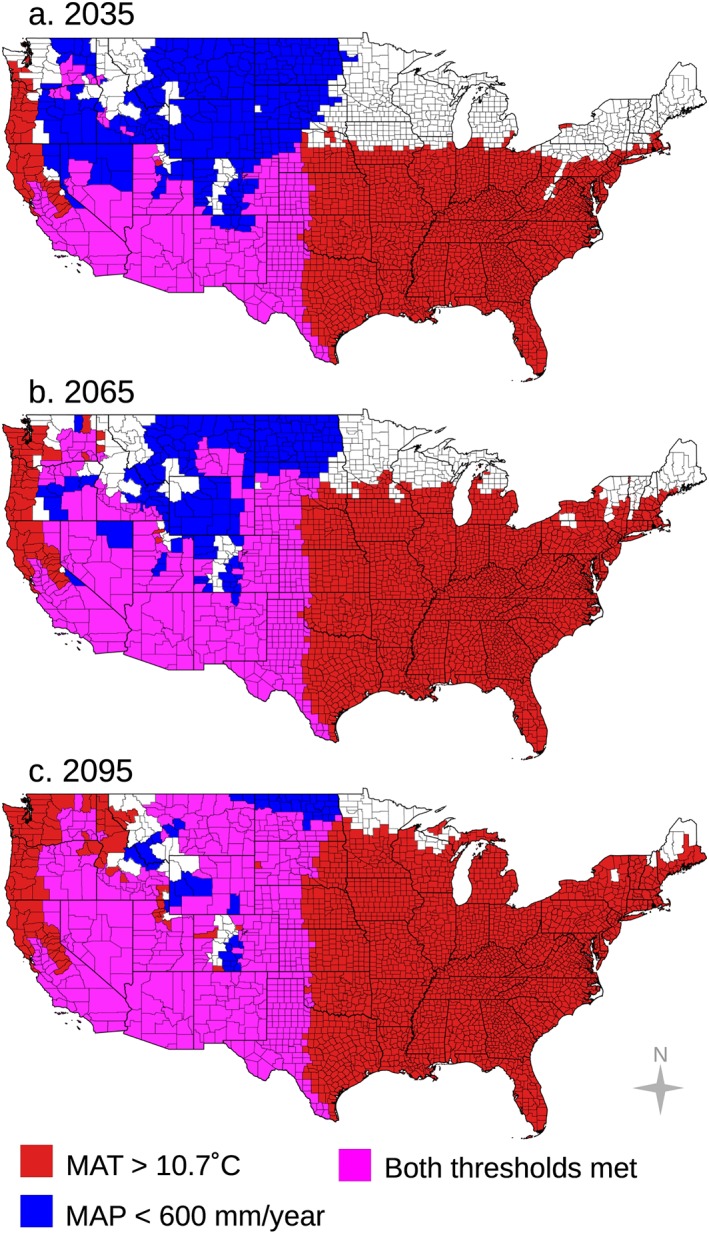Figure 4.

For the representative concentration pathway (RCP) 8.5 climate change scenario, areas where climate will permit Valley fever endemicity are shown for the years (a) 2035, (b) 2065, and (c) 2095. Areas where mean annual temperature will permit endemicity are shown in red, areas where mean annual precipitation will permit endemicity are shown in blue, and areas where both temperature and precipitation will permit endemicity are shown in magenta, following the color scheme used in Figure 3. The area endemic to Valley fever will extend farther north in future decades, especially in the rain shadows of the Sierra Nevada and Rocky Mountain Ranges. Precipitation will play a key role in determining which areas become endemic through time, as greater rainfall and moisture availability will limit the eastward extent of Valley fever as well as its presence in the Pacific Northwest and in western counties at higher elevations.
